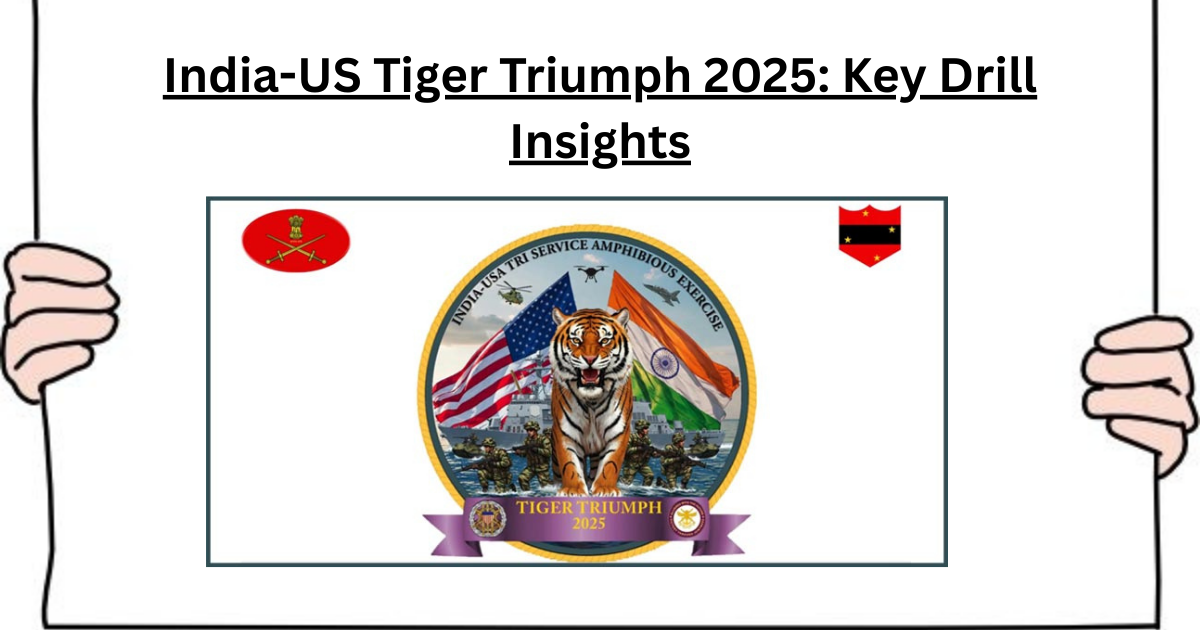Kakinada, April 18, 2025: The fourth edition of the joint India-US tri-service military exercise ‘Tiger Triumph 2025’ wrapped up this week in Kakinada, Andhra Pradesh, reinforcing the growing strategic cooperation between the two nations.
The 11-day exercise, which ran from April 1 to April 11, brought together the Indian Army, Navy, and Air Force alongside their American counterparts in a high-stakes simulation focused on Humanitarian Assistance and Disaster Relief (HADR) operations.
Interoperability Takes Centre Stage
The exercise unfolded in two key phases. The harbour phase, conducted in Visakhapatnam, included pre-sail briefings, ship boarding drills, medical workshops, and subject matter exchanges on drone technology and space applications. Personnel from both sides also participated in friendly sports events and cross-deck visits, laying a strong foundation of coordination and camaraderie.
The action then shifted to the Kakinada coast for the sea phase, where joint operations showcased impressive military synergy. Highlights included amphibious landings, slithering operations from helicopters, and aerial support from C-130 aircraft, as both nations simulated emergency response scenarios.
Tech-Driven Collaboration
This year’s edition stood out for its integration of cutting-edge technologies. For the first time, satellite coordination and unmanned systems were actively deployed, adding precision and speed to the operations.
In a notable move, U.S. Space Forces–Indo-Pacific and Indian space agencies collaborated to enhance situational awareness using live satellite data. Additionally, a new platform facilitated exchanges between defense operators, government representatives, and private tech partners to explore the use of autonomous solutions in real-time crisis management.
Culmination and High-Level Presence
The exercise concluded with a Distinguished Visitors’ Day on April 11, attended by top military brass and government dignitaries from both nations. Demonstrations of joint HADR drills drew praise for their precision, readiness, and seamless coordination.
Officials from both sides reiterated their commitment to enhancing defense preparedness and regional security, with a shared focus on swift, effective response to humanitarian crises.
A Growing Strategic Bond
Launched in 2019, Tiger Triumph remains the only tri-service military exercise between India and the United States. Its 2025 edition reflected not just tactical cooperation but also the evolving strategic vision the two democracies share in the Indo-Pacific.
As global challenges continue to mount, the successful completion of Tiger Triumph 2025 is a powerful signal of joint resilience, trust, and future-forward defense collaboration.
For more such news, follow us!
Key Takeaways
-
Strengthened India-US Military Partnership
The exercise reinforced growing defense ties and operational coordination between the two nations’ armed forces. -
Tri-Service Participation
Involved all three military branches—Army, Navy, and Air Force—from both countries, highlighting its significance as a comprehensive joint drill. -
Two-Phase Structure
Conducted in two parts—harbour phase in Visakhapatnam (planning and training) and sea phase near Kakinada (live operations and joint simulations). -
Focus on HADR Operations
Simulated real-world Humanitarian Assistance and Disaster Relief (HADR) scenarios, improving readiness for disaster response. -
Tech Integration for the First Time
Introduced satellite-based coordination and unmanned systems, with collaboration between Indian agencies and U.S. Space Forces–Indo-Pacific. -
Public-Private Collaboration
Included first-ever industry-government-operator exchanges exploring the use of autonomous technologies in military and crisis response. -
Distinguished Visitors’ Day Highlighted Execution
The final day showcased seamless joint operations to top military and government officials, underlining the success of the drill. -
Focus on Indo-Pacific Stability
Reaffirmed the shared commitment of India and the U.S. to regional peace, security, and strategic preparedness in the Indo-Pacific.





